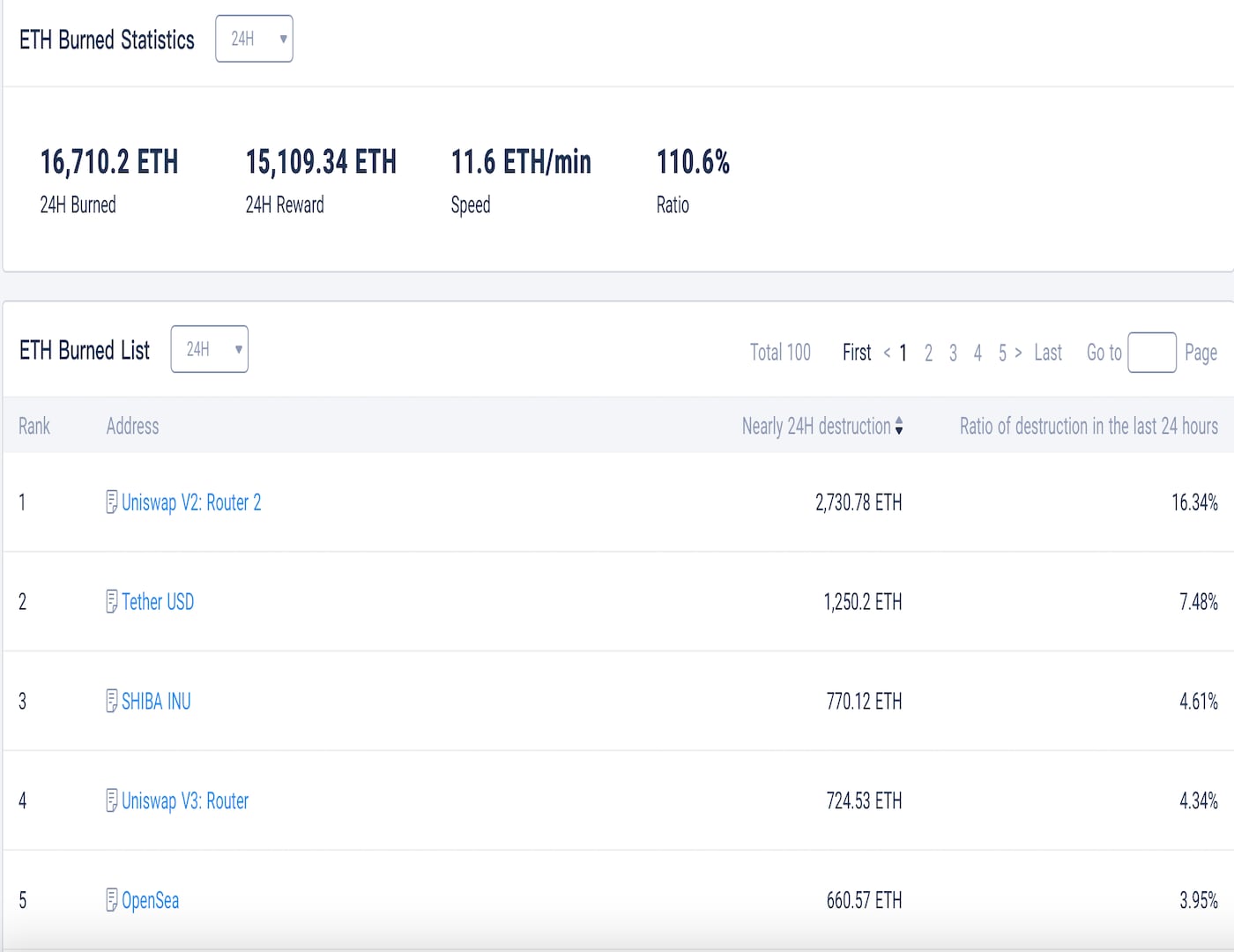Ether (ETH) clocked a new all-time high on Friday as blockchain data showed that smart contract blockchain Ethereum burned more tokens than it emitted in the last 24 hours, thanks partly to strong action in Shiba Inu (SHIB).
The native token of Ethereum’s blockchain rose to $4,402 during Asian hours, topping the previous record high of $4,379 reached in May, according to CoinDesk data.
At the going price of $4,370, the cryptocurrency is up 45% on a month-to-date basis versus bitcoin’s 40% gain. The ether-bitcoin implied volatility spread is rising in a sign that the market expects ether to continue leading the price action in the coming weeks, as Thursday’s First Mover newsletter mentioned.
Data tracked by Tokenview shows Ethereum produced 15,109.34 ETH and burned 16,710.2 ETH in the past 24 hours. That’s a net supply reduction of 1,600 ETH.
SHIB, the self-proclaimed dogecoin killer, burnt 770.12 ETH, becoming the third-largest ETH destroyer. Uniswap V2 and Tether destroyed 2729.22 and 1248.72 ETH, respectively.

SHIB has rallied a staggering 800% this month, hitting a record high of $0.00008870. According to Defi Llama, the total value locked in ShibaSwap, a decentralized exchange that allows users to stake SHIB, has doubled to $512 million this month.
Coin burning refers to the process of removing tokens from circulation and is the crypto market’s equivalent of a stock buyback.
The Ethereum Improvement Proposal (EIP) – 1559 implemented on Aug. 5 EIP 1559, burns a portion of fees paid to the miners, removing a notable chunk of coins from circulation. The upgrade has tied the amount of ether burned with the network usage.
Since activation, the upgrade has destroyed 668,339 ETH, representing over 50% of the new coins issued over the same period.
Some options traders are betting that U.S. regulators would soon approve a futures-based exchange-traded fund (ETF) and are buying cheap out-of-the-money calls in anticipation of a price rally. Data tracked by Laevitas shows the ETH $15,000 call expiring in March has drawn strong demand in recent days.
Go to Source
Author: Omkar Godbole
